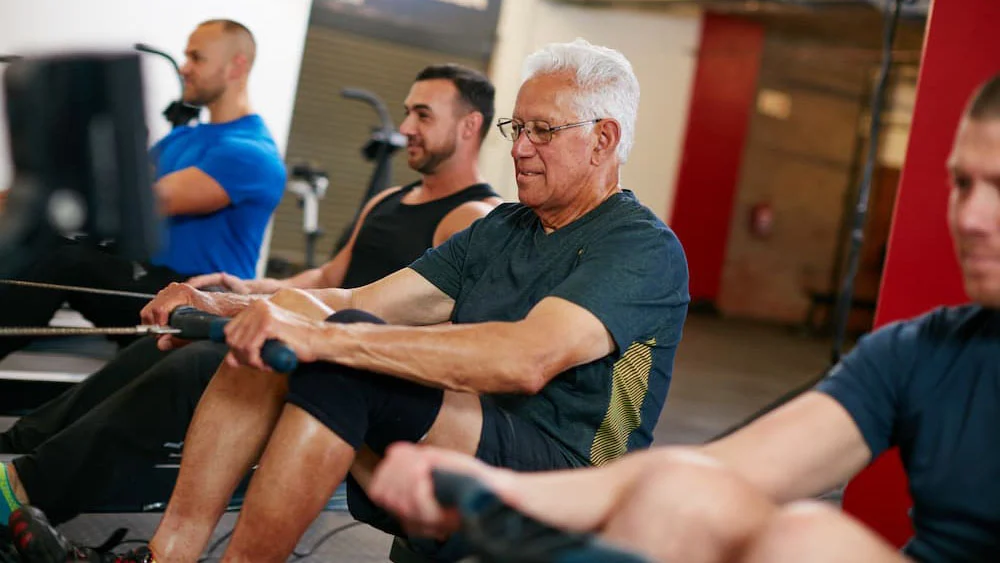For years, many people have been told that heavy strength training is only for those chasing a bodybuilding physique. Those messages have quietly kept entire generations from building the strength their bodies were designed to sustain. Yet the truth is simple: lifting heavy weights isn’t about becoming bulky. It’s about preserving the very abilities that help you stay steady, capable, and independent as you age. God designed the human body with remarkable capacity for resilience and renewal—but that design requires resistance, tension, and the kind of work that signals your muscles to stay alive and strong.
You may have already noticed subtle changes with the passing of time—standing up more slowly from a chair, needing a moment to steady yourself, or feeling less powerful climbing stairs. These shifts aren’t signs of weakness in your character; they are signs of fast-twitch muscle fibers quietly fading from lack of use. These type 2 fibers are responsible for the quick bursts of force that help you catch yourself when you stumble, react to sudden changes in movement, or confidently step off a curb. When these fibers weaken, the world feels a little less stable under your feet.
Research shows that adults lose an estimated 3–5% of total muscle mass each decade after age 30 when strength training is absent. Much of this loss occurs in the fast-twitch fibers that protect you from falls and injuries. What begins as a slow drift can, over time, reshape how you move through life. Yet this decline is not inevitable. Heavy strength training interrupts that trajectory and signals your body to rebuild what inactivity tries to steal.
One of the biggest misconceptions is that lifting heavy automatically makes women bulky or overly muscular. In reality, female hormones make extreme muscle gain exceptionally difficult without intentional bodybuilding protocols. Training with heavier weights simply strengthens the fibers that keep you agile, tones the muscles that support healthy posture, and boosts the metabolism that helps regulate body weight. You can train for strength without ever training for size—and the body responds accordingly.
Another myth is that older adults should avoid heavy lifting to protect their joints. The opposite is true. Strength training builds the muscles that cushion and support the joints God designed to bear weight. When muscles weaken, joints take on work they were never meant to handle alone. When muscles strengthen, joints finally get backup. With proper technique, guidance, and gradual progression, heavy lifting is one of the most protective things an older adult can do for long-term mobility.
The beauty of strength training is that it adapts to every age and ability. Squats, deadlifts, presses, and pulls can be scaled with lighter weights at first and gradually increased as your body learns the rhythms of the movements. Form takes priority, not speed. And effort—not comparison—is where progress grows. The goal isn’t to compete with anyone else but to steward the body you’ve been given, honoring its design by cultivating the strength it was created to hold.
Those who stick with consistent strength training often find their emotional and spiritual lives strengthened as well. When you push through a difficult set and complete something you once believed impossible, it forms a quiet courage inside you. That confidence carries into everyday life—how you walk, how you work, how you handle challenges. God created the body and soul to work together; when the body grows stronger through wise discipline, the mind and spirit often follow.
Heavy lifting also supports metabolic health, blood sugar regulation, and bone density—three areas that significantly shape long-term quality of life. Maintaining strength allows you to keep doing daily tasks without strain: carrying groceries, lifting children or grandchildren, gardening, moving furniture, or enjoying recreational activities. Strength isn’t about chasing numbers in the gym; it’s about supporting the life you want to live outside of it.
One of the most inspiring truths is that the body can rebuild far more than most people realize. Studies show that even individuals in their seventies and eighties can regain fast-twitch strength that mirrors the responsiveness of someone decades younger. The muscles don’t age out of improvement—they simply wait for a clear signal that they’re needed again. Heavy lifting is that signal.
Choosing to lift heavier weights is choosing to fight against the slow erosion that aging tries to impose. It’s choosing stability over frailty, vitality over decline, and resilience over resignation. It’s a reminder that the body you inhabit is not disposable; it’s a gift entrusted to you—one you can strengthen, restore, and steward through the simple, powerful act of picking up weight.
With steady training, you gain more than muscle. You gain confidence. You gain safety. You gain the ability to meet life’s physical demands without fear. And you gain the quiet satisfaction of knowing you are doing something that honors both your present wellbeing and your future strength.
Heavy weights don’t just build stronger bodies—they build stronger lives.






